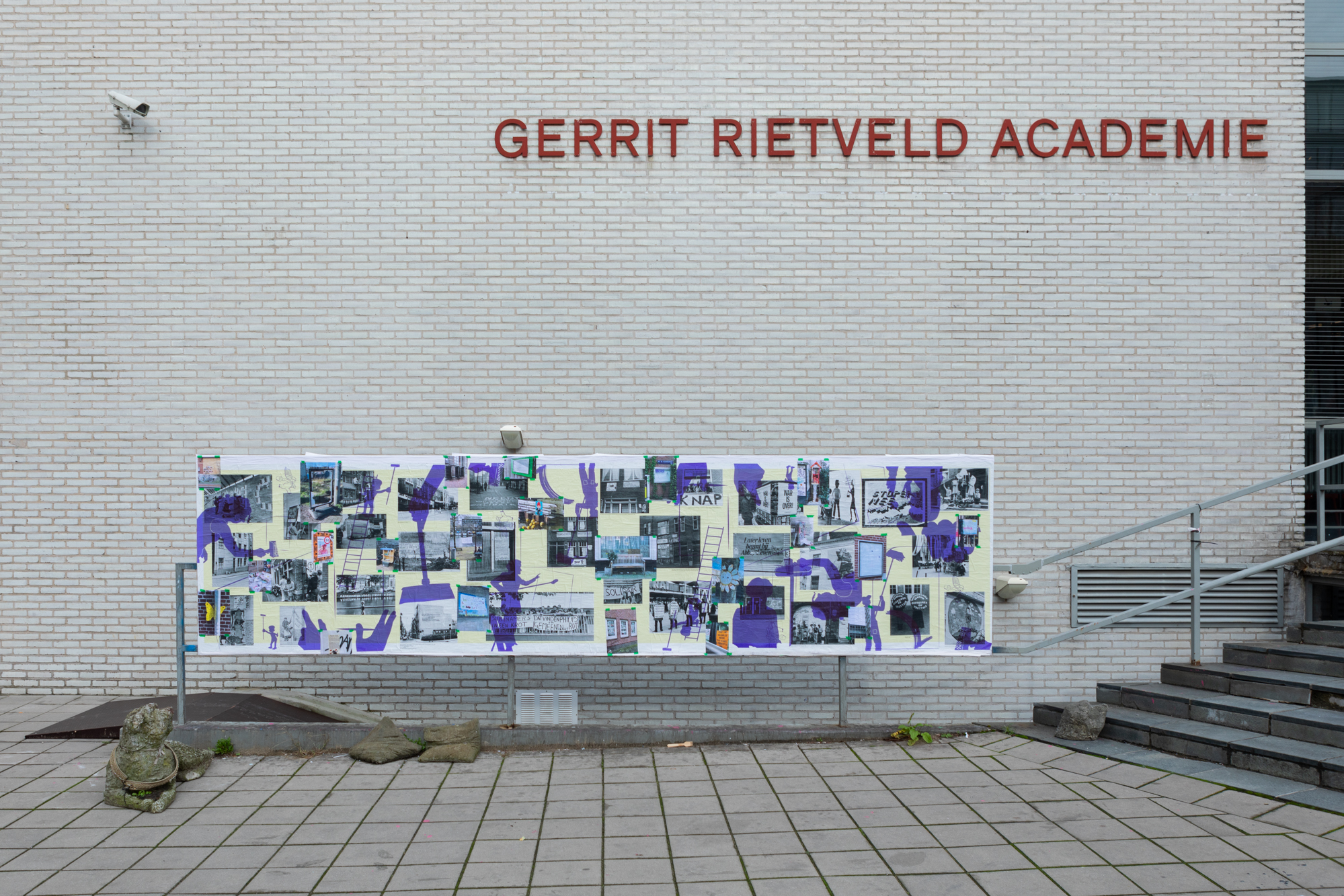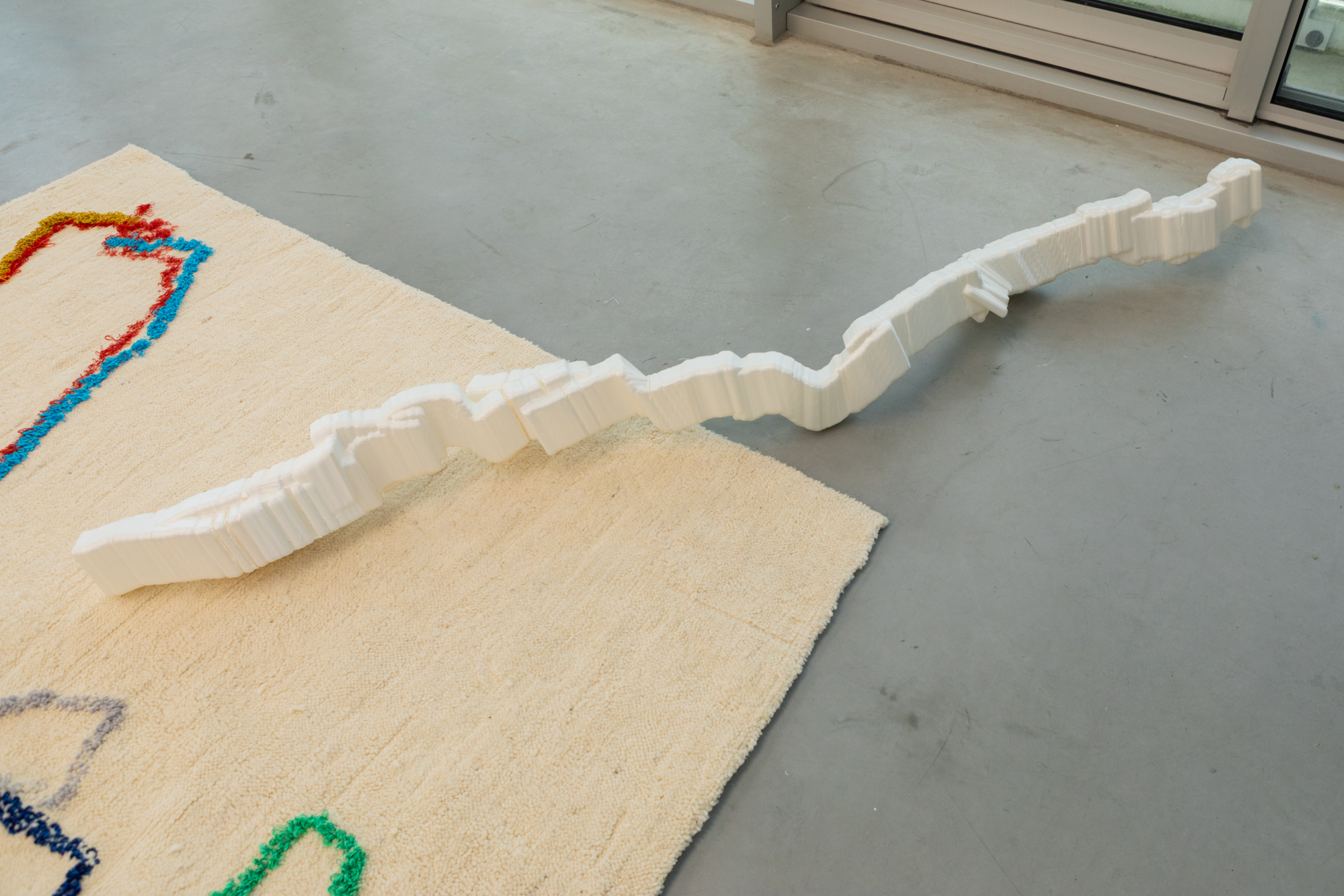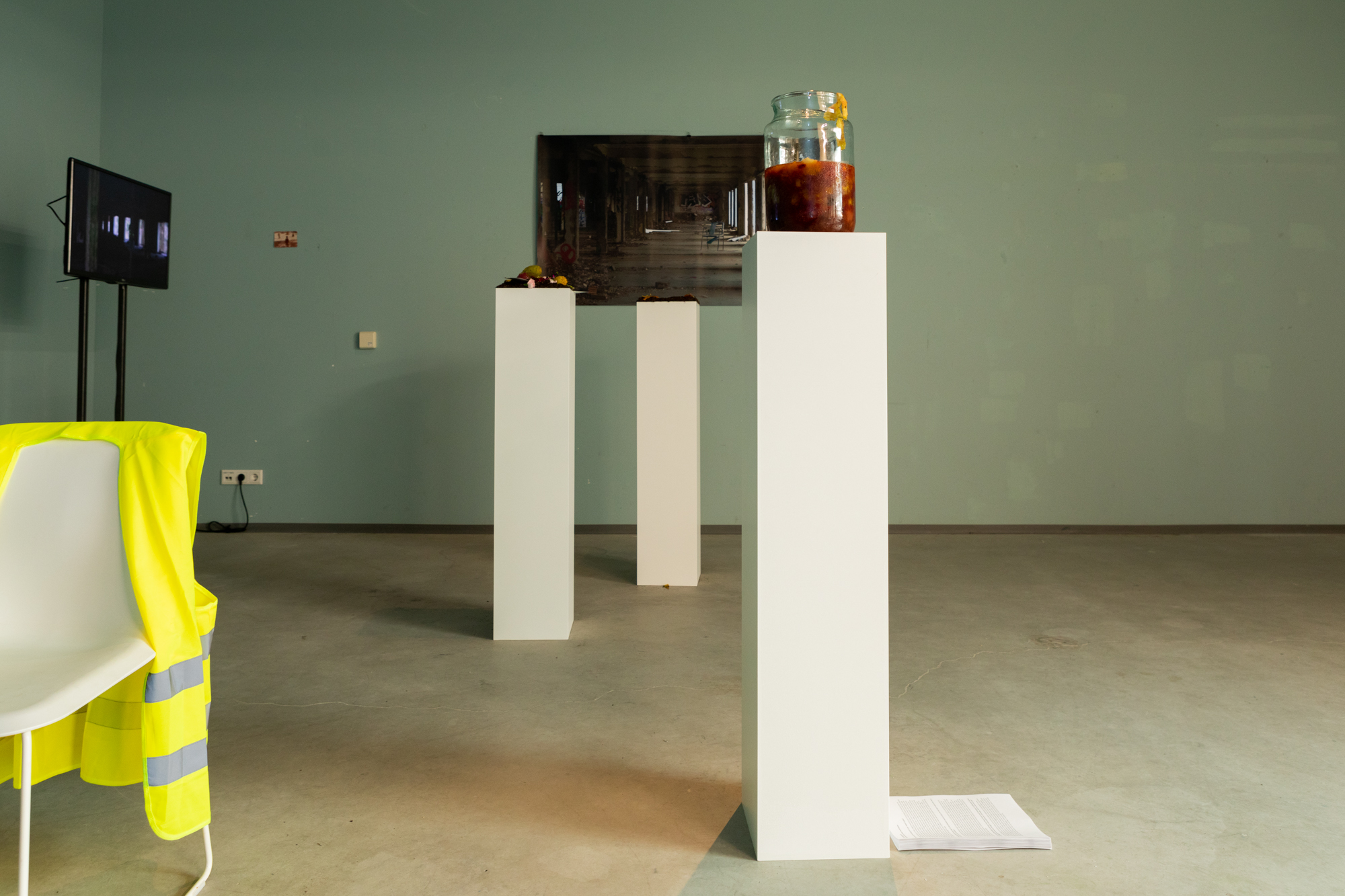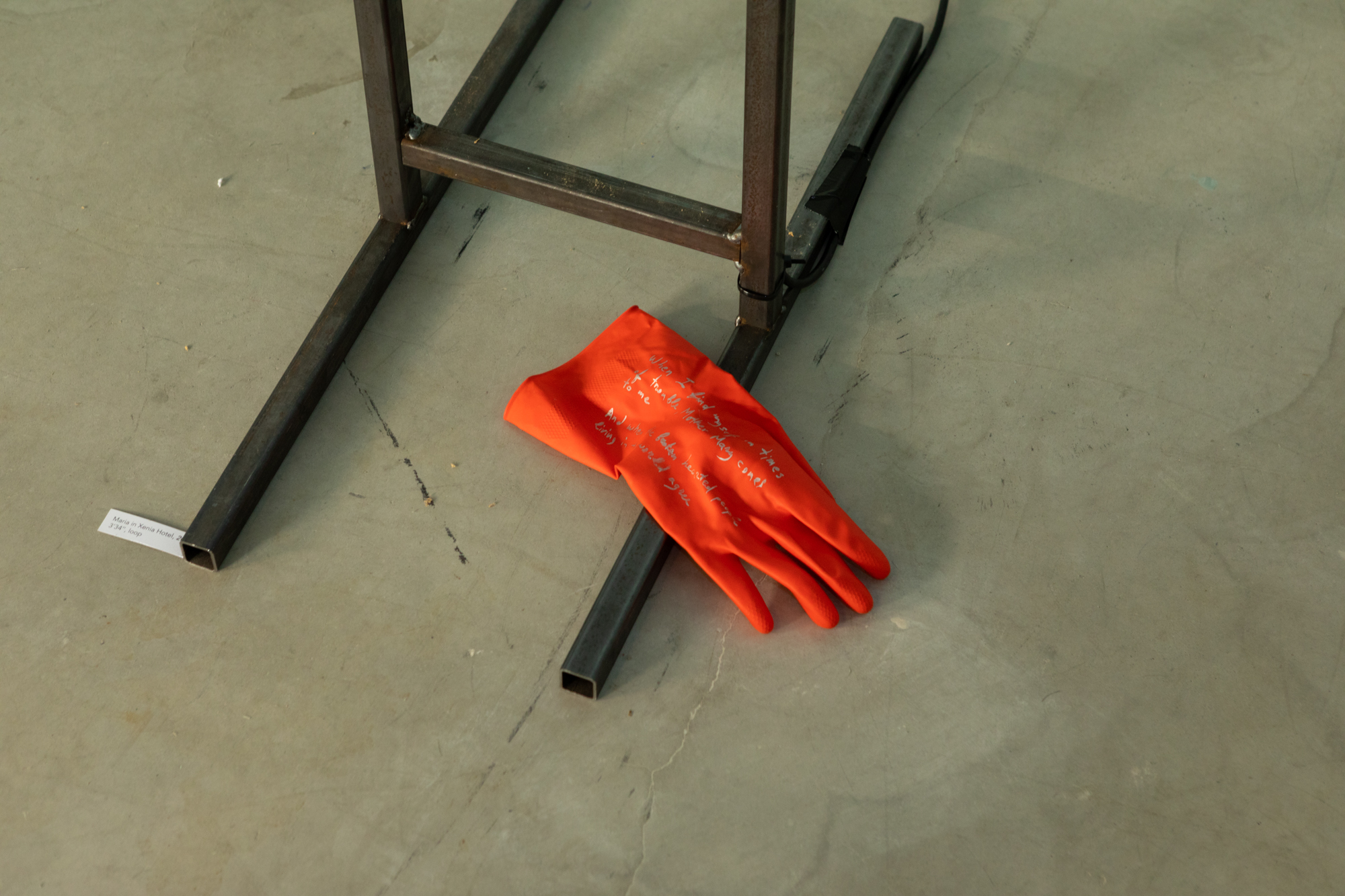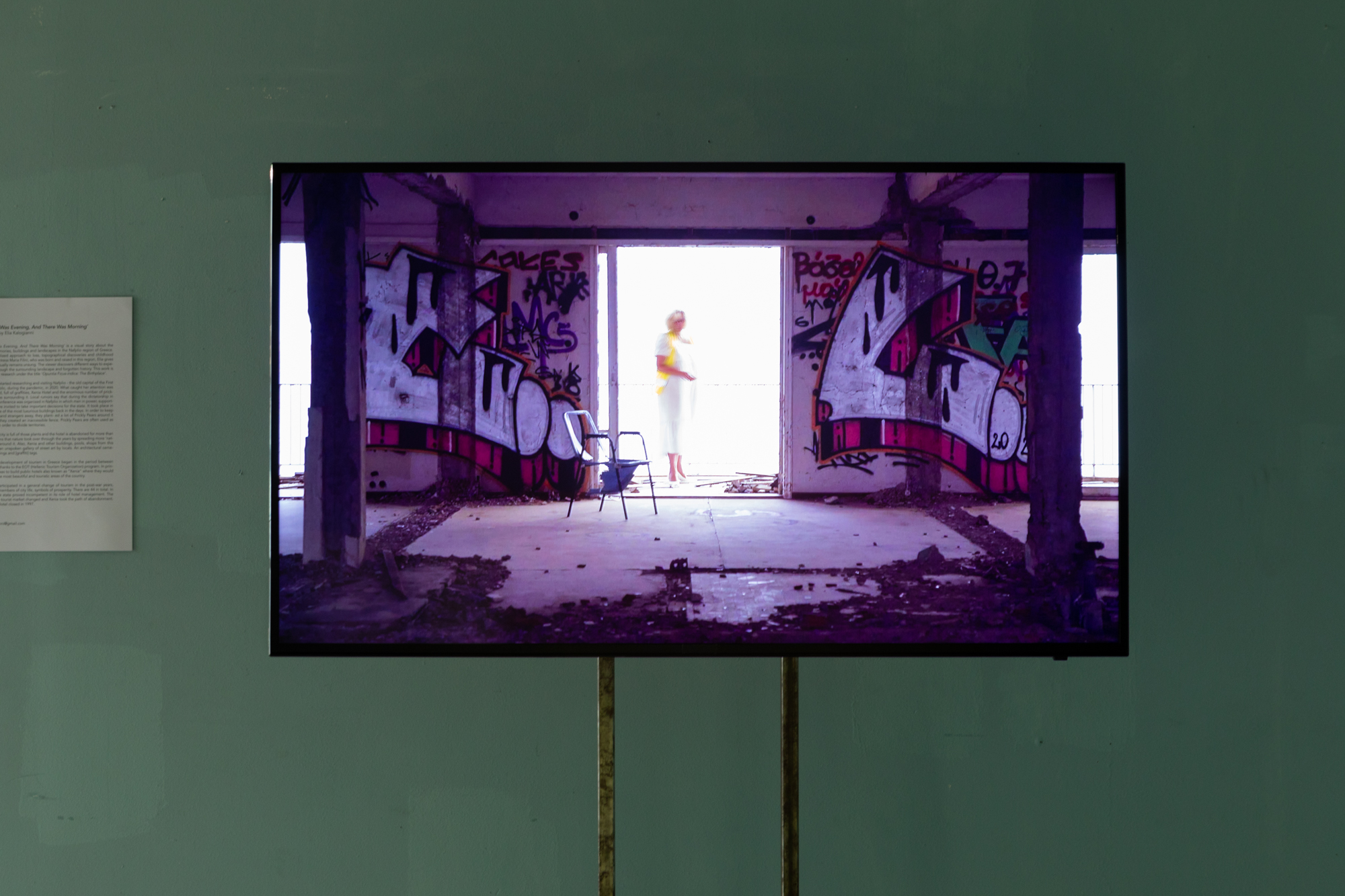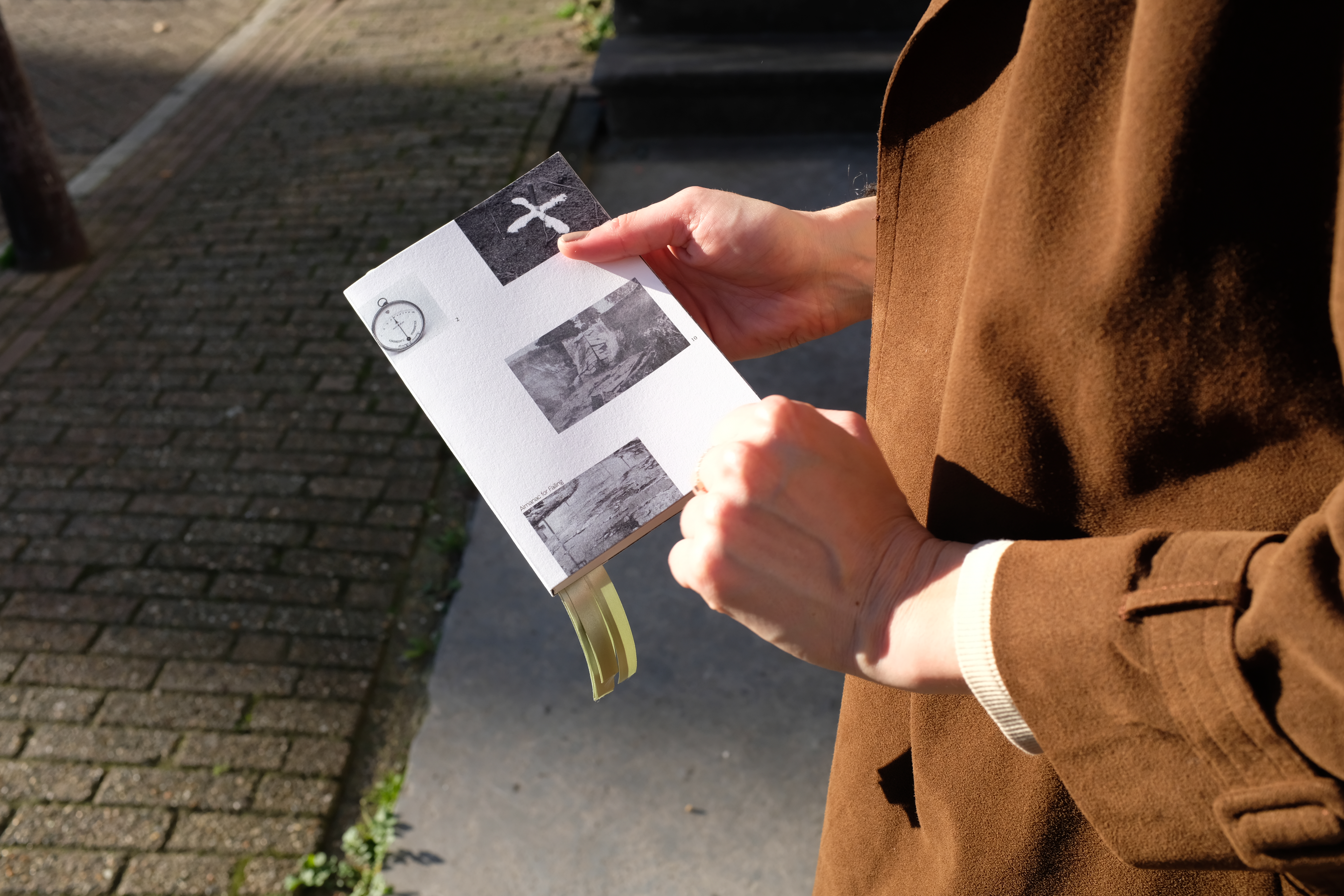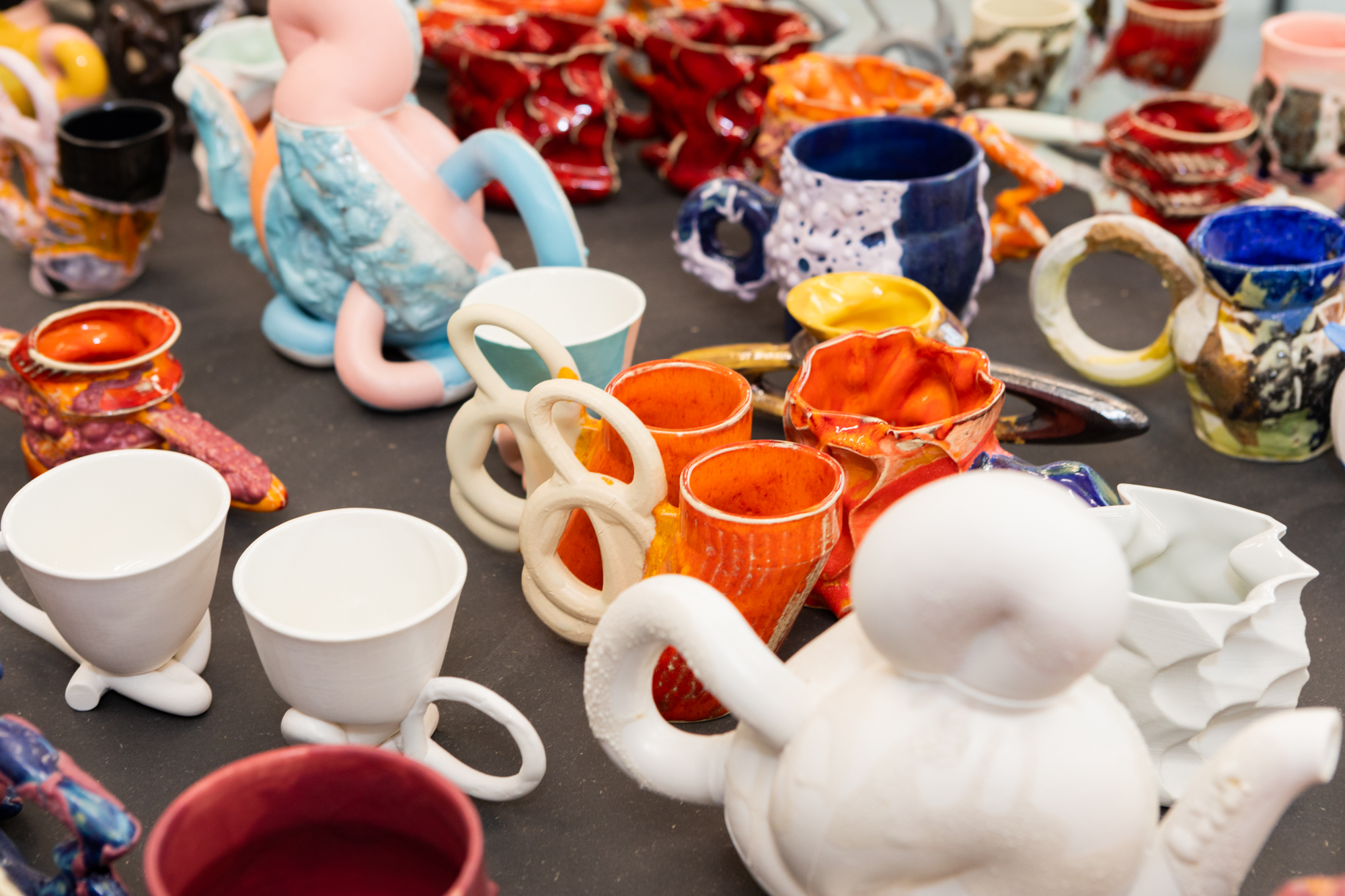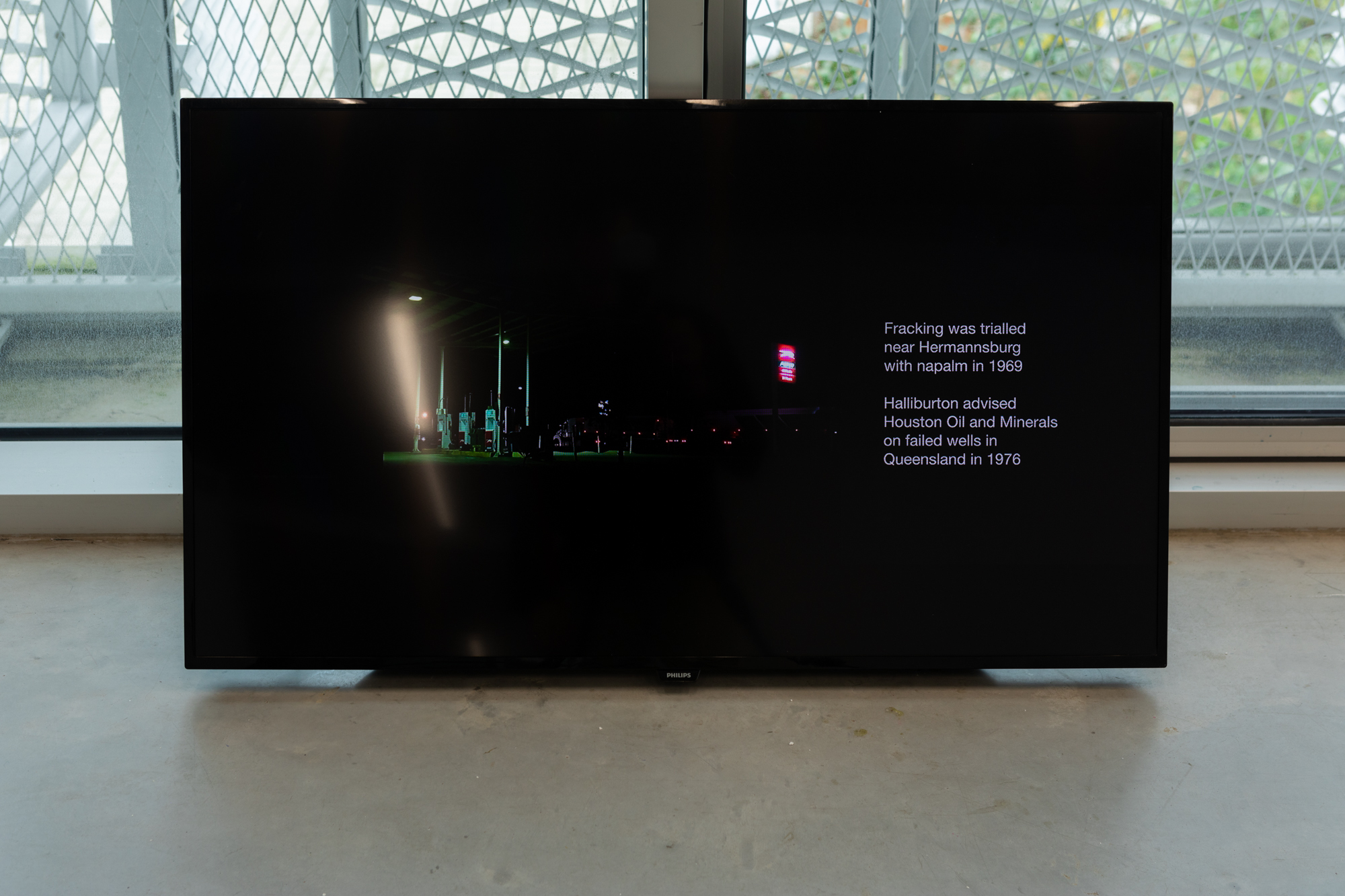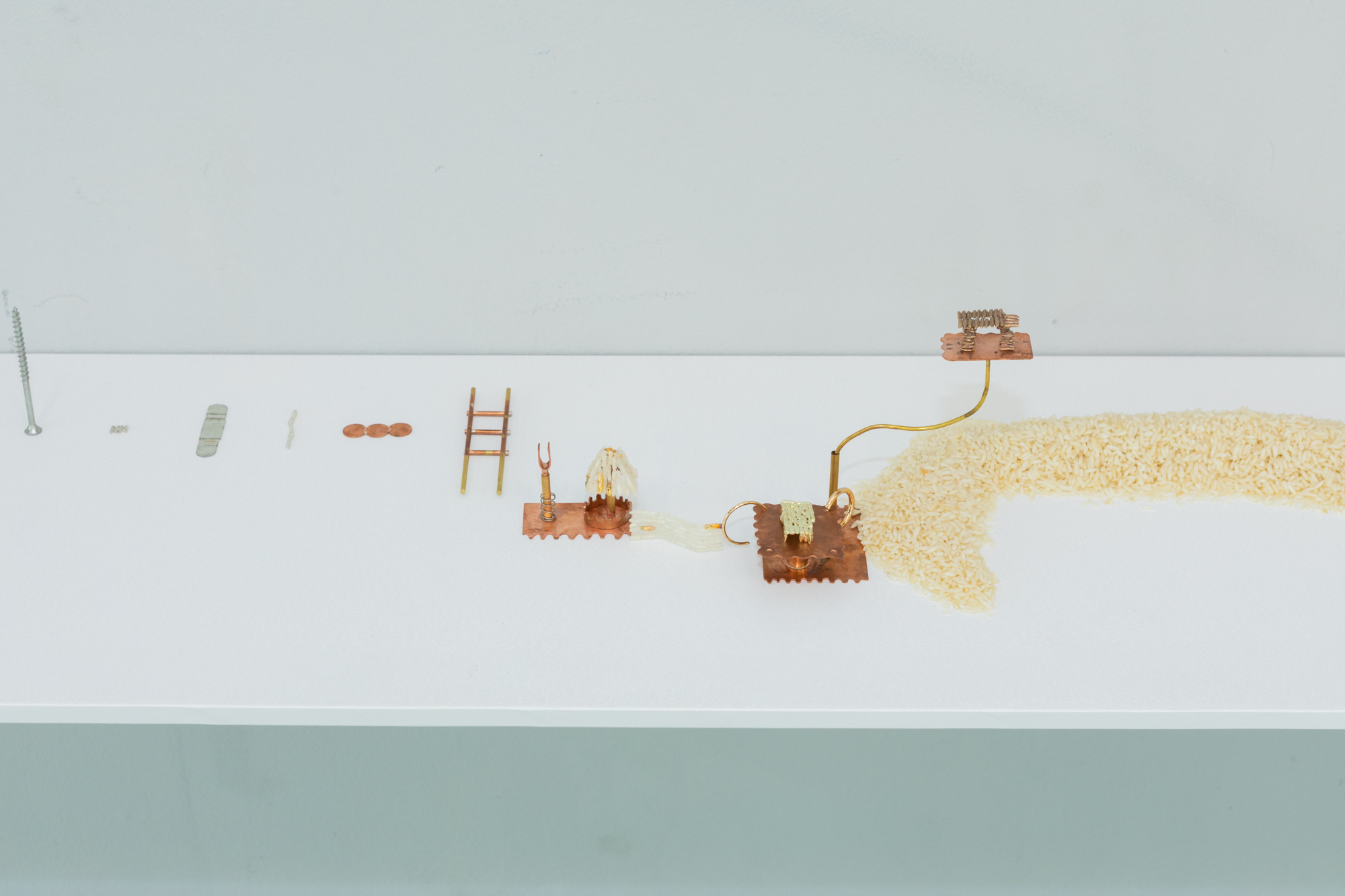In Research and in Fellowship, Plus Three More Paths to Stay in Proximity
by Angeliki Tzortzakaki
I finally sit down and look at my screen’s several tabs, left open from late last night. The one I encounter first is a Wikipedia page:
In celestial mechanics, an orbit is the curved trajectory of an object, such as a planet around a star, or of a natural satellite around a planet, or of an artificial satellite around an object or position in space such as a planet, moon, [or] asteroid . . . Normally, orbit refers to a regularly repeating trajectory, although it may also refer to a non-repeating trajectory.1
I rest my eyes closed for a moment and try to memorize the sentence.
. . . the curved trajectory . . .
. . . satellite around an object or position . . .
. . . may also refer to non-repeating . . .
Moving in orbit might as well mean being moved by a drive, a gravitational pull, a force of desire, a dizziness of sorts. It comes with the fixated gaze on a spot or object in order not to lose balance when rotating around yourself. I search for other mundane, non-galactic orbits as I try to visualize parallel movements that still maintain a temporary feeling. Orbit is movement led by curiosity, in repetition and circularity, while bodies follow circular trajectories in particular rhythms. What kind of worlds are born out of these scores? Are there potentials for one to end up in conjunctions and do these conjunctions allow one to dive deeper into themself with the world?
These questions came up after I visited the symposium and exhibition organised by Rietveld Academie and Sandberg Instituut where the work of nine research fellows for the academic year 2021–2022 were presented across lectures and a comprehensive exhibition. I spent some hours between the Theory Stairs, trying to find the best sitting position while listening to fellows sharing a glimpse into their work, one by one, slowly weaving a set of intentions through images, words, and sounds. The speakers let their thoughts diffuse in the space: with wildfires footage; tactile mappings of immaterial gestures; furious flash floods; dollhouses animating adult wet dreams; disembodied zones of land and sea; rendered bodies of clay surrendering to gravitational pulls; rooms of linguistic potentiality; billboards sharing top secrets; infrastructures impersonating mythological creatures; prickly pears narrating architectures of oppression; rice sticking together; and linguistic burn-outs . . .
And how is that all related, in research and in fellowship? I have been recently discussing with fellow art workers the meaning of the word “research.” What do we search for and try to find? Should we allow more space for other links and interpretations, for more freedom to blur these distinctions and desired outcomes? The ones that run alongside our initial goals and our commitment, while still detouring multiple times and possibly ending leading us down a completely different path. Shake off a self-interrogation that expects researchers to be consistent, committed, cross-disciplinary, context sensitive, and a series of other c-words that compose, collide, and compute constellations of knowledge systems in artistic education and its afterlife.
Befriending observation and attention, the period of fellowship—literally being in proximity—resulted in a series of transformative meanings which in multiple ways blur the distinction of the quantitative and the qualitative: questioning measurement and delivery and at the same time eliciting a textural quality. Immersed into their work in verbal, sonic, performative, and installation-based ways of inhabiting the space, the nine fellows share how they spent their time orbiting around their points of departure to find themselves a little bit repositioned by material, infrastructural, or linguistic forces—and I decide to surrender to their worlds.
When I open my eyes again, an odd landscape appears. I try to keep the dizzy feeling in order to figure out whether I am part of it or if it is rather something I see with a temporary distance. Some bits of the setting, pieces of images stitched together, bring me closer to lived experiences. Relatable in non-definite ways, the landscape appears closer until three distinctive orbits move around in variable proximities:
To Satellite Dis*embodied Data
I follow a route of information that doesn’t seem to shy away from feelings and affect. In fact, it is documenting processes of reciprocal transactions of data while looking at its material expression (see: Waèl el Allouche — Meta-Heuristics: A Narrative of Discovery). Curious about heuristic navigation systems and how they can lead to negotiations of agency, I linger on thoughts of gesturality, city experience, and optimization. Putting these thoughts in perspective—of two potential cultural contexts with large differences in their urban fabric—I am introduced to Randonautica, where arbitrary navigation is based on a different logic. To render navigational movement data into something explicitly material—and therefore highlight that this data is not always abstract—also means finding ways of tracing movement in micro and macro scale, pointing out the ways that humans orientate in more-or-less urban environments. Without being nostalgic for the Situationists’ dérive, the orbit’s force proposes modes of creating routes, linking dots of inquisitive exploration through ourselves and urban experiences of the city, and through ourselves and our phones. In a second moment, that very orbital movement materializes in woven surfaces where gesturality is traced in bold colors, landing a three-dimensional movement back to a surface you can almost sit on or wrap around yourself.
Somewhere not too far away, a different kind of data is harnessed to enable cross-medium manipulations. By dragging and pulling surfaces and points of touch, ceramic bodies are moved from clay to 3D to clay to 3D to video work and then back to a large surface densely populated by their fleshiness (see: Octave Rimbert-Rivière — Leak, Creak, Break). A series of liquid containers, cups, and carafes made their way to distorted forms before they became materialized again. These vessels moved to an extended reality, and landed—perhaps by helicopter—in the rocky uninhabited islands of a sun-showered archipelago, very familiar to my understanding of insular landscapes and their color palettes. Changing their form and shape in order to inhabit these rocky surfaces, the ceramics become characters in stories of digital serenity, floating quietly amongst these bodies of land. And where is my body in the meantime? Which parts of the skin’s surface is stretched to its limit and how can this stretchiness allow one to look at a body differently, dissociating form from interpretation? If the distorted bodies of clay could speak, would they tell stories of mutable landscapes?
To Float or Drift in Speculative Waterways (in Ecological Crisis)
I zoom out and wander in the void for a little while, like space debris. I let the currents and gravity pull me in more than one direction. Gradually, my body becomes a boiling entity looking for ways to channel and diffuse. Due to a sudden temperature drop, a cool-down process gives me a watery feeling, moving fast and easily amongst places. Suppressed by concrete interventions I am feeling less spacious, yet, with much force and drive to reach something very far.
Thankfully, some form of a structure and framework for me to exist reappears when I become a river. Speed reveals an unprecedented force, stronger and stronger, this time as a “triple-dip.” La Niña y el Niño, impersonated as such, showed up to reposition problematics within weathering and forecasting (see: María Mazzanti — forecasting, otherwise). They enable new readings on the failure of infrastructures as support systems by speaking from a temporary body: that of the flash floods. As water is everywhere, the word “weathering” continues to accumulate new meanings and symbols, actions and layers of linguistic interpretation. So too does the flood, becoming the narrator, the infrastructure itself that delineates inequalities and social asymmetries.
Floating away from vast amounts of hydropower, I take time to rest from myself, look at my scars, my joints, my cracks, parts where I need to heal from the ongoingly escalating climate violence. Gradually, I come to realize that the materially abstract body of water is endlessly entangled with life and the bodies that inhabit it. They can be both the floating vessel and the carrier liquid that a body lies in or floats on. Perceived themselves as a drifting body that contains and is contained, their materiality is only made possible when it is able to tell us stories of belonging, of ancestry, of the ethics of resourcing and consuming, and of the time-cycles of transformation in material agency (see: Taylor Le Melle — Text Exercise 1). Looking at things that float, I start noticing how they respond to the seas: adjusting in order to better suit all kinds of waves.
Drifted by the currents, floating bodies cross large distances in microseconds until they find themselves in that space between sand and sea where urgency calls for new cartographies. What they encounter is a landscape that suffers from disembodiment and alienation, a limestone hole filled with settler’s violence and land appropriation (see: Rachel O'Reilly — The Extraction/Protection Fix of Late Liberal Environmentalism). Where the land ends and the water begins, a lot is at stake. Regulations become vague or of dubious purpose, leaving the communities and cultures that inhabit and depend on it entirely exposed to mass drilling. Thinking alongside the shores—otherwise called “littoral zones”—makes the expansion of my caring areas urgent. In between leisure and extraction, a state of contact forms an ever-changing landscape, undulating outside of binaries. And within this undulatory movement, ecosystems of increasingly bleached coral reefs ask for acknowledgement, in more-than-human configurations of possibility. However, they are shocked to find out they have already been proclaimed dead, disappearing, not-alive-enough, to an extent that their not-enoughness is taken for granted and overpassed by industries of sucking.
To Script a City and Unbuild a Language
Washed away by the tide, carried into the world’s multi-currents and senses, I land in heavily languaged environments. Languages of architecture, of culture, of visual communication, of history, and of historicized narratives—red-brick horizons. Schools of concrete bodies, more or less all the same height, more or less narrow but pointy, hang in there. And as they exist, I, a city user, walk past them. Big images gaze at me, moving billboards ask for my attention (see: Elisabeth Klement and Laura Pappa — Public Display). I blink. It is not just my impression, they are actually moving. Shaped as lips of paper, Cronenbergian mouths whisper to me in silence. They say, “Beware of public space, it’s precious. Pay attention,” they say, “so that you can learn a collective sense of spatial memory.” I blink and turn around and all the billboards are waving, but no one is around to witness it with me. Where is everyone? What happened to our square gatherings, our walls speaking, our beats of protest? What type of shared spaces can be claimed for non-individual, non-profit-oriented use? Finally a bench in the deserted red-brick city. I sit down, supported by its back.
Between the red-brick walls, large, cold glass windows make me curious enough to take a quick glimpse of its interiors. Frozen faces seem unsurprised to see my indiscreet gaze, only to realize that I am looking inside a gigantic dollhouse (see: Clementine Edwards — Thinking Miniatures & (Climate)Colonialism), twice as big as my actual overpriced tiny house. I spot the werkkamer first, while on the upper floor my eyes can barely reach the slaapkamer and the kleerzolder. I let my curiosity sneak in and follow the tenants, witness their thoughts and whispers, among books, ironed bed linen, and a fireplace. The tenants, whose garments are betraying their nineteenth-century style, are now vividly opinionated in their mundane discussions. In heavily furnished rooms, many objects unfamiliar to my childhood era accompany their lives, giving articulated accounts of their charged histories or their materiality. While their racy stories come to the surface, narratives shift away from their formerly sterilized tags. They speak through their bodies, getting to half-joke or half-rant about discomfort, manipulation, extraction, violence, and desire. Their words are sharp and fragile, like copper and rice. They go in and out of scale, and soon I am too big to look into them again, and find myself back on that bench. A door close by is leading to a small garden, so I take a quick step toward it, foreseeing that I will soon fall out of orbit again. A warm sea breeze meets me and tastes familiar. The soil feels different and so does the vegetation when I look up: amazed by a labyrinth of opuntia ficus-indicas, I stop and stare at an upside-down coral reef-like structure covered with spikes (see: Elia Kalogianni — Opuntia Ficus-indica: The Birthplace). Mesmerizing and hostile, these plants have been used to apply architectural control, creating fences of inaccessibility, and used by oppressive regimes such as the military juntas. Looking closer into these sculptural spiky plants, I can see modernist architectural buildings reminiscing about an era of accelerationism and capitalist growth. These cacti are another case of non-human labor exploited to serve questionable ethics and politics.
Whether I attempt to verbalize all I have seen or the in-between, I linger in this space that surrounds language, seeking for eye contact and drafting contracts that exceed themselves—that create more space within a predetermined area of verbal interactions. And this is where we meet, drifting beyond the corridors of semiotics, undoing ourselves through the walls of over-naming habits until we end up in the nearbies (see: Jason Hendrik Hansma — Say it Right). We move freely in this yet unnamed space as long as it lasts, happily rotating clumsily and losing balance. It makes our jaw muscles relax and soon the frenetic laugh is transforming into a chant. A choir of slurring voices dissolves all images and stitches the shifting landscapes again. Ready by now, we welcome possibilities of counter inactivities.
Back at that computer of mine, still dizzy from the journey across coordinates and altitudes, I pick up the open tab with the blank page and the inpatient cursor; I rest my back nostalgically. Looking back at the three orbits, of (dis)embodied data, speculative waterways, and scripted cities, I see new encounters taking shape . And with that, I hope, new orbits will be born from their cartographies of discourse, for one to linger with time to think, look for, and maybe make. Their choreographic abilities will delineate crossing points and share possibilities for polyphonic conjunctions. When improvising free movement, I have often been given the suggestion to pursue a gesture or direction that felt less intuitive to the familiarity of my body while trying to maintain my organic flows. In other words: here is an ode to all temporary orbits that create meaningful meetings.

